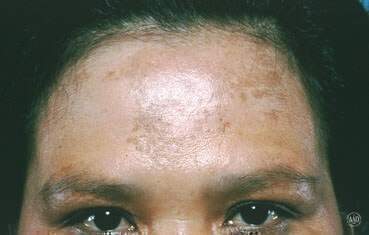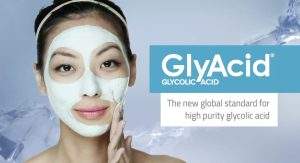Fixing Melasma with Glycolic Acid
Melasma: The condition and the causes
Melasma is a skin condition where brown and gray-brown patches appear on the facial skin. Particularly, Melasma most often shows up on the forehead, the bridge of the nose, on the cheeks, on the area of skin above the upper lip, and on the chin.
Although the exact causes of melasma are varied from individual to individual, the condition is most often known to occur when melanocytes, the color-making cells in the skin, produce too much color. This is why consumers with darker complexions consistently have higher rates of melasma, as their skin naturally contains more active melanocytes.

Additionally, melasma is frequently caused by time spent in the sun, without adequate sun care or SPF protection.
Finally, and perhaps most intriguingly, melasma is often caused by hormonal shifts and fluctuations of all kinds. Unfortunately for many women, this makes often melasma “the mask of pregnancy,” as the hormonal shifts caused by pregnancy tend to trigger the brown and grey-brown patches symptomatic of melasma.
The tendency of melasma to be kicked off by hormonal switches also makes women the more frequent sufferers of melasma. Today, only 10% of all melasma cases are men, according to the American Academy of Dermatology.
Treatment: Glycolic acid and chemical peels
Melasma is notoriously hard to treat, but for consumers suffering from the discolored facial skin and frustrating brown patches, there is a solution.
"Turns out good old chemical peels can actually deliver certain skin benefits — like reversing melasma and breakouts — better than high-tech devices."
Doris Day
NYU Langone Medical Center
Glycolic acid, specifically glycolic acid-based chemical peels, are one of the absolute best ways to cure melasma and drastically reduce the discolored patches of skin that mark melasma sufferers – in the shortest time possible.
“Turns out good old chemical peels can actually deliver certain skin benefits—like reversing melasma and breakouts—better than high-tech devices,” said Doris Day, a clinical associate professor of dermatology at NYU Langone Medical Center, in an interview with Allure.
Why glycolic acid?
Glycolic acid has several properties that make it the perfect ingredient to treat melasma and skin discoloration.
First, glycolic acid is the best Alpha Hydroxy Acid available on the market today for exfoliating the skin. Topical application of glycolic acid, specifically in a high concentration chemical peel, can help consumers rapidly peel off the brown or grey skin cells on the surface of the face, and essentially shed off some of the discolored cells caused by melasma.
Then, once the exfoliation process on the surface of the skin is set into motion by a high glycolic acid concentration, the living skin cells below the surface of the face receive the signal to produce and cycle upwards. These new skin cells are then more receptive to other skin care products and treatments that can provide a double whammy punch to help with discoloration, like Vitamin C, hydroquinone, and azelaic acid.
In fact the, a study by the Journal of IMAB recently discovered that “chemical peels with 15% TCA and 35% glycolic acid in conjunction with 20% azelaic acid reduce significantly MASI values after therapy and are equally effective in the treatment of melasma.”
Lastly, glycolic acid could be the key to curing melasma, thanks to its ability to interfere with melanin production. Melanin is the dark brown or black pigment that naturally occurs in the hair, skin, and iris of the eye, and is responsible for the tanning of sun-exposed skin. Glycolic acid’s strength in reducing melanin production could mean those genetically predisposed to melasma, or suffering from sun-damaged activated melasma, could find glycolic acid especially helpful on their journey for evenly toned skin.
The formulator’s opportunity?
While melasma is an all-too-common skin condition, it can elude treatment for years on end. The introduction of more at-home glycolic acid-based chemical peels is an excellent way for innovative formulators to help thousands treat this skincare issue effectively and outside of the doctor’s office.






